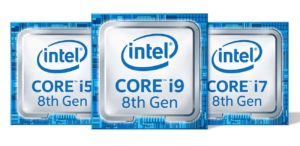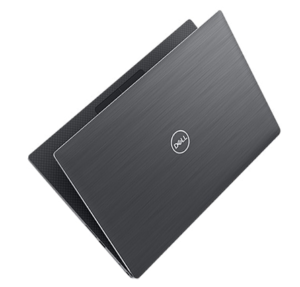 For years now, SolidBox has been providing laptops purpose-built for SOLIDWORKS. Until now, all those laptops have had one thing in common: 4 processor cores. The quad-core processor has been a trusted workhorse since the beginning, but the latest generation of SolidBox laptops is moving to Intel’s newest line of mobile processors with six core CPUs.
For years now, SolidBox has been providing laptops purpose-built for SOLIDWORKS. Until now, all those laptops have had one thing in common: 4 processor cores. The quad-core processor has been a trusted workhorse since the beginning, but the latest generation of SolidBox laptops is moving to Intel’s newest line of mobile processors with six core CPUs.
While most functions in SOLIDWORKS are single-threaded (negating some of the benefits of multi-core processors), simulation and photo-rendering are not. This means that frequent users of SOLIDWORKS Simulation and SOLIDWORKS Visualize are going to see a major increase in performance by adding 50% more CPU cores. The new processors will also bring notable benefits to Mastercam 4- and 5-axis programmers as well as Adobe Creative Suite users.
Single-Threaded Performance
Now b ack to the single-threaded issue. We’re realists at SolidBox. We aren’t going to move to the newest tech just because it’s the newest. It has to provide better performance. For that reason, we were concerned about the single-threaded performance of the latest Intel mobile processors. They all boast a higher Turbo clock speed (with the Xeon E-2186M coming in at a blazing 4.8GHz), but the base clock speeds on these processors are lower across the board. Let’s keep looking at that Xeon E-2186M.
ack to the single-threaded issue. We’re realists at SolidBox. We aren’t going to move to the newest tech just because it’s the newest. It has to provide better performance. For that reason, we were concerned about the single-threaded performance of the latest Intel mobile processors. They all boast a higher Turbo clock speed (with the Xeon E-2186M coming in at a blazing 4.8GHz), but the base clock speeds on these processors are lower across the board. Let’s keep looking at that Xeon E-2186M.
In our product line of SolidBox laptops, this is going to take the place of the XEON E3-1535M v6 which had a base and turbo frequency of 3.1GHz and 4.2GHz respectively. We immediately liked the fact that the newer processor has a higher turbo frequency, but we wondered if we would see a dip in performance on single-threaded processes based on the lower base frequencies. We’ve done some benchmarking  within SOLIDWORKS and are pleased to say that that is not the case! We’re seeing the best benchmarks we’ve ever seen on our SolidBox laptops with the latest generation of six core CPUs. This tells us that the unit is running at or near it’s max turbo frequency whenever it needs to.
within SOLIDWORKS and are pleased to say that that is not the case! We’re seeing the best benchmarks we’ve ever seen on our SolidBox laptops with the latest generation of six core CPUs. This tells us that the unit is running at or near it’s max turbo frequency whenever it needs to.
Intel Confirms Our Suspicions
We contacted Intel to better understand when the processor is running at the base speed vs. turbo speed. And they confirmed our suspicions. When applications like SOLIDWORKS are calculating any data, the turbo speeds are triggered based on the workload it is processing. Once the processor senses an increase in computational loads, it flips the switch to run the processor at the highest speed possible. The process is seamless to the end-user, and it should be happening in the background.
An Evolution in SolidBox Laptops
Our job is to deliver the answers you need when determining hardware solutions for your specific design challenges. We are constantly evaluating what’s available to us as SOLIDWORKS users to help us do our job best. This latest generation of six core CPUs from Intel is the perfect addition to our mobile line of CAD workstations. We love them and we think you will, too.
